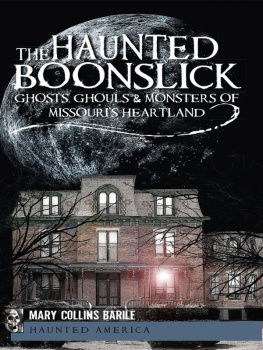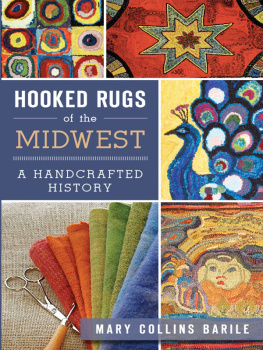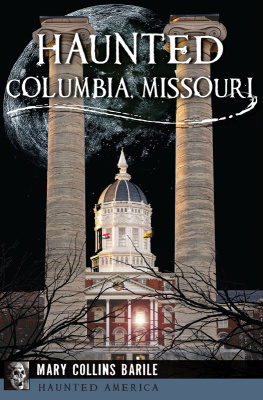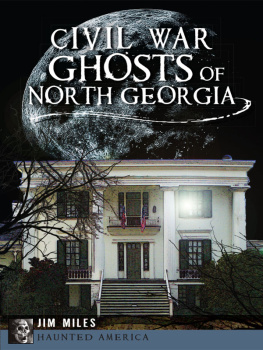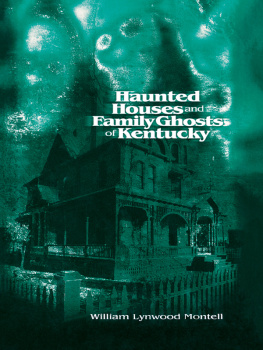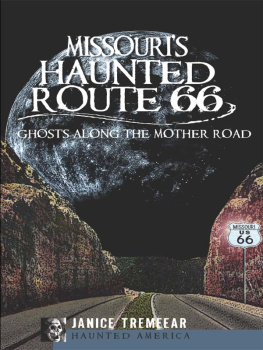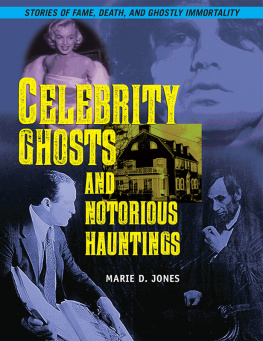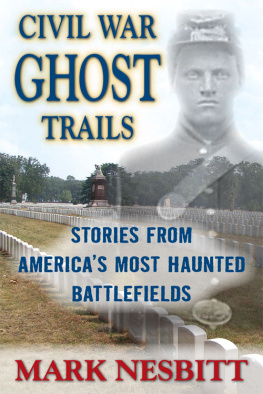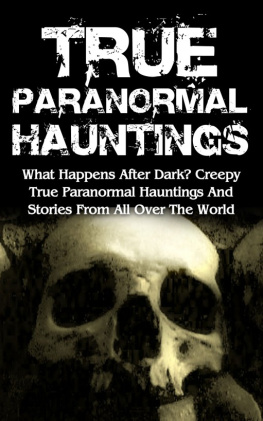
Published by Haunted America
A Division of The History Press
Charleston, SC 29403
www.historypress.net
Copyright 2011 by Mary Collins Barile
All rights reserved
First published 2011
e-book edition 2013
Manufactured in the United States
ISBN 978.1.62584.163.6
Library of Congress Cataloging-in-Publication Data
Barile, Mary.
The haunted Boonslick : ghosts, ghouls, and monsters of Missouris heartland / Mary Collins Barile.
p. cm.
Includes bibliographical references (p.).
print edition ISBN 978-1-60949-208-3
1. Ghosts--Missouri. I. Title.
BF1472.U6B373 2011
133.109778--dc23
2011025150
Notice: The information in this book is true and complete to the best of our knowledge. It is offered without guarantee on the part of the author or The History Press. The author and The History Press disclaim all liability in connection with the use of this book.
All rights reserved. No part of this book may be reproduced or transmitted in any form whatsoever without prior written permission from the publisher except in the case of brief quotations embodied in critical articles and reviews.
This book is for Sammy, Bella, Cooper and Rascal,
who keep away the ghosts at night.
CONTENTS
PREFACE
Ghost: The sense should be fury, anger, ugly; the root in Old Norse means to rage, in the Gothic to terrify [while] the derivatives seem to point to a primary sense to wound, tear, pull to pieces.
Oxford English Dictionary
Who knew ghosts could be so much work? Over the past several years, I have found myself sitting in the pitch black of a jail at 2:00 a.m., hoping to coax a shy spirit into chatting. Ive trekked with friends up hollers and over fields in search of an old cabin said to be the scene of a spook light. I have waited patiently for a broken music box to begin tinkling and dragged recording equipment up and down dark alleys to try and catch the sounds of the past. I have slipped on ripe persimmons while trying to decipher gravestones in the Boone burying ground and met people who had met ghosts. It turns out that finding ghosts is difficult, but finding ghost stories is not as hard as you might thinkjust walk into a gathered group of Missourians in the Boonslick region, mention ghosts and after a few minutes of uncomfortable shuffling and demurring (I dont really believe in spirits), you will have more stories than you can shake a sheet at.
The Boonslick, named after a naturally occurring saline spring, is among the oldest settlement areas west of the Mississippi, and the cultural traditions here run deep. The region has vaguely defined borders, sometimes running from St. Louis across the state to Saline and Jackson Counties. Other times, the border dips down to Jefferson City or arcs downward into the deep Ozarks. The region is home to the true Missourian, the show me individual who takes nothingespecially ghostsat face value. Boonslickers cherish their history, and more to the point, they are proud to share it with friends.

The Boonslick is among the most haunted regions in Missouri.
Over the years, at meetings, concerts and community events, I heard tales about a black carriage, a headless horse and a local spook light. It was clear that there were many lesser-known, even historical, Boonslick ghosts in danger of being forgotten, of fading completely from the landscape of local history as new stories emerged to push the old tales back into the shadows. Many readers interested in ghost lore have already seen, heard, visited or pondered the sad, haunted Lemp Mansion of St. Louis, the battlefield spirits of southern Missouri or the otherworldly poetry of Patience Worth. These stories have made the jump from local lore to national attention, both in books and on screen through popular ghost-hunting television shows. I did not want to retell the same tales, and it quickly became apparent that I would not have to. We have ghosts aplenty in the Boonslick, and most of them are unknown to outsiders. And in addition to actual hauntings and visitations, Boonslickers claim a number of excellent ghost jokes, indicating that not only did the early settlers have a sense of humor but also that ghosts were a part of their daily lives on the frontier.
Welcome to Missouris haunted heart, the Boonslick.
ACKNOWLEDGEMENTS
I have been so fortunate in my friends and colleagues that it is impossible to list all who have helped me locate stories, participated in interviews and trips or offered an encouraging cup of coffee during a long night of ghost writing. Some people wished to remain anonymous, but you know who you are, and you know you have my deepest appreciation.
I wish especially to thank the following people for their encouragement and support: the Baa Baa Boonville Hookers (Janet Acton, Sara Arrandale, Elinor Barrett, Susan Meadows and Karen Neely), Margaret Barile, James Cogswell, Deb Entwistle, Susan Fales, Susan Flader, Arlene Hoose, Brett Johnson, Ryan McNeil, Christine Montgomery, Phebe Nichols, Diane and Fred Oerly, Greg Olson, Nan Presser, Lucille Salerno, Matt Saltzberg, Jill Sappington, Jennie and David Schutte, Gena Scott, Mike Shaw, Betty Sieckmann and Richard Wallace.
The following groups were also gracious with their help and their time: the Friends of Historic Boonville, the Columbia Paranormal Society, Beth Meyer and Paranormal Adventures USA, the Springfield Paranormal Research Group, the State Historical Society of Missouri, Ellis Library at the University of Missouri and the Jefferson City Tourism Bureau, including Steve Picker and Marie Lacey.
Tess Montgomery provided several photographs for this book.
Special thanks to Ben Gibson and the folks at The History Press who took on this project with enthusiasm and helped me with their patience, talent and experience.
INTRODUCTION
TO THE BOONSLICK
From some cause, it happens that in the western states, a tract of country gets a name, as being more desirable than any other. The hills of the land of promise were not more fertile in milk and honey than are the fashionable points of immigration. Boons Lick was the common centre of hopes, and the common point of union for the people. Ask one of them whither he was moving, To Boons Lick, to be sure.
Timothy Flint
The beginning of the Boonslick is a vague place, with some people claiming St. Charles as its home and others putting forward St. Louis and even eastward into Illinois, near the river crossings. The Boonslick Road wandered like a wraith through the center of Missouri, disappearing, reappearing, twisting and winding across town and prairieand so did its history.
In 1804, Nathan Boone, Daniels son, was returning home from a hunting trip when he stumbled across a salt spring not far from the Missouri River, near Arrow Rock. Salt licksplaces near a spring where salt crystallized and animals gathered to lick the mineralwere important to settlers since they provided one of the few ways by which to preserve food. Not long after the discovery, Nathan, his brother and some partners began a salt-boiling operation at the spring, which became known as the Boones Lick or Boonslick. The path leading from St. Charles, Missouri, to the lick became the Boonslick Trail, along which taverns, hotels and farms appeared, even as the Native Americans there were pushed farther west. The Boonslick region stretched north to the prairies and south to the Ozarks and held some of the richest farming land in the country. The region was also the cradle of the Santa Fe Trail, which stretched eight hundred miles from Arrow Rock to the Mexican city of faith and connected the Boonslick to the wealth and culture of the Southwest.
Next page
